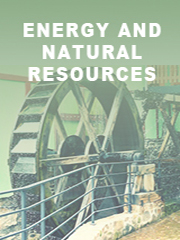Report overview
Hydrogen Generation or Electrolysis is a promising option for hydrogen production from renewable resources. Electrolysis is the process of using electricity to split water into hydrogen and oxygen. This reaction takes place in a unit called electrolyze. Electrolyzes can range in size from small, appliance-size equipment that is well-suited for small-scale distributed hydrogen production to large-scale, central production facilities that could be tied directly to renewable or other non-greenhouse-gas-emitting forms of electricity production.
This report aims to provide a comprehensive presentation of the global market for Hydrogen Generation, with both quantitative and qualitative analysis, to help readers develop business/growth strategies, assess the market competitive situation, analyze their position in the current marketplace, and make informed business decisions regarding Hydrogen Generation. This report contains market size and forecasts of Hydrogen Generation in global, including the following market information:
Global Hydrogen Generation Market Revenue, 2018-2023, 2024-2029, ($ millions)
Global Hydrogen Generation Market Sales, 2018-2023, 2024-2029, (Units)
Global top five Hydrogen Generation companies in 2022 (%)
The global Hydrogen Generation market was valued at US$ 249 million in 2022 and is projected to reach US$ 444 million by 2029, at a CAGR of 8.6% during the forecast period. The influence of COVID-19 and the Russia-Ukraine War were considered while estimating market sizes.
Global Hydrogen Generation key players include Proton On-Site, 718th Research Institute of CSIC, Hydrogenics, Shandong Saksay Hydrogen Energy, etc. Global top four manufacturers hold a share nearly 50%.
Asia Pacific is the largest market, with a share about 45%, followed by Europe, and Americas, both have a share over 45 percent.
In terms of product, Traditional Alkaline Electroliser is the largest segment, with a share about 55%. And in terms of application, the largest application is Traditional Alkaline Electroliser, followed by PEM Electroliser.
We surveyed the Hydrogen Generation manufacturers, suppliers, distributors and industry experts on this industry, involving the sales, revenue, demand, price change, product type, recent development and plan, industry trends, drivers, challenges, obstacles, and potential risks.
Total Market by Segment:
Global Hydrogen Generation Market, by Type, 2018-2023, 2024-2029 ($ Millions) & (Units)
Global Hydrogen Generation Market Segment Percentages, by Type, 2022 (%)
Traditional Alkaline Electroliser
PEM Electroliser
Global Hydrogen Generation Market, by Application, 2018-2023, 2024-2029 ($ Millions) & (Units)
Global Hydrogen Generation Market Segment Percentages, by Application, 2022 (%)
Power Plants
Steel Plant
Electronics and Photovoltaics
Industrial Gases
Energy Storage or Fueling for FCEV's
Power to Gas
Others
Global Hydrogen Generation Market, By Region and Country, 2018-2023, 2024-2029 ($ Millions) & (Units)
Global Hydrogen Generation Market Segment Percentages, By Region and Country, 2022 (%)
North America
US
Canada
Mexico
Europe
Germany
France
U.K.
Italy
Russia
Nordic Countries
Benelux
Rest of Europe
Asia
China
Japan
South Korea
Southeast Asia
India
Rest of Asia
South America
Brazil
Argentina
Rest of South America
Middle East & Africa
Turkey
Israel
Saudi Arabia
UAE
Rest of Middle East & Africa
Competitor Analysis
The report also provides analysis of leading market participants including:
Key companies Hydrogen Generation revenues in global market, 2018-2023 (Estimated), ($ millions)
Key companies Hydrogen Generation revenues share in global market, 2022 (%)
Key companies Hydrogen Generation sales in global market, 2018-2023 (Estimated), (Units)
Key companies Hydrogen Generation sales share in global market, 2022 (%)
Further, the report presents profiles of competitors in the market, key players include:
Proton On-Site
718th Research Institute of CSIC
Teledyne Energy Systems
Hydrogenics
Nel Hydrogen
Suzhou Jingli
Beijing Zhongdian
McPhy
Siemens
TianJin Mainland
Areva H2gen
Shandong Saksay Hydrogen Energy
Yangzhou Chungdean Hydrogen Equipment
Asahi Kasei
Idroenergy Spa
Erredue SpA
ShaanXi HuaQin
Kobelco Eco-Solutions
ELB Elektrolysetechnik GmbH
ITM Power
Toshiba
Outline of Major Chapters:
Chapter 1: Introduces the definition of Hydrogen Generation, market overview.
Chapter 2: Global Hydrogen Generation market size in revenue and volume.
Chapter 3: Detailed analysis of Hydrogen Generation manufacturers competitive landscape, price, sales and revenue market share, latest development plan, merger, and acquisition information, etc.
Chapter 4: Provides the analysis of various market segments by type, covering the market size and development potential of each market segment, to help readers find the blue ocean market in different market segments.
Chapter 5: Provides the analysis of various market segments by application, covering the market size and development potential of each market segment, to help readers find the blue ocean market in different downstream markets.
Chapter 6: Sales of Hydrogen Generation in regional level and country level. It provides a quantitative analysis of the market size and development potential of each region and its main countries and introduces the market development, future development prospects, market space of each country in the world.
Chapter 7: Provides profiles of key players, introducing the basic situation of the main companies in the market in detail, including product sales, revenue, price, gross margin, product introduction, recent development, etc.
Chapter 8: Global Hydrogen Generation capacity by region & country.
Chapter 9: Introduces the market dynamics, latest developments of the market, the driving factors and restrictive factors of the market, the challenges and risks faced by manufacturers in the industry, and the analysis of relevant policies in the industry.
Chapter 10: Analysis of industrial chain, including the upstream and downstream of the industry.
Chapter 11: The main points and conclusions of the report.
